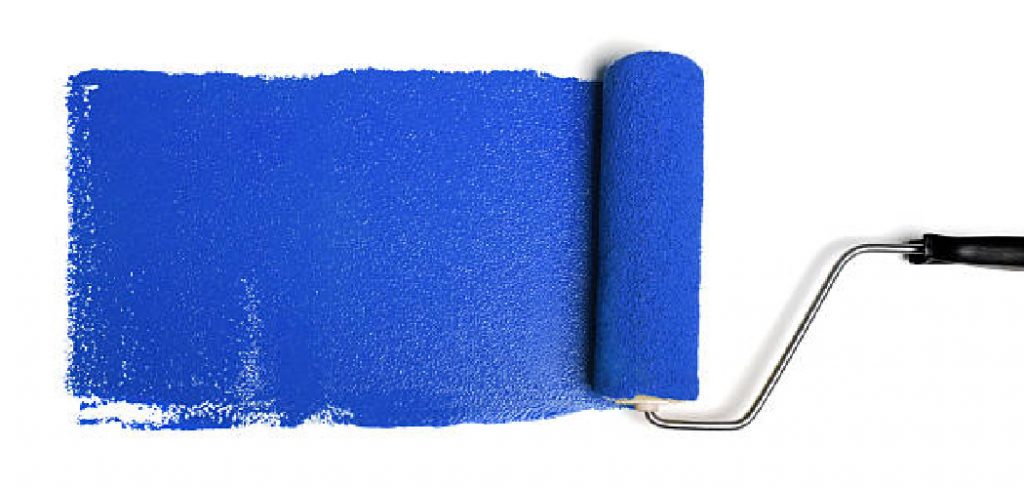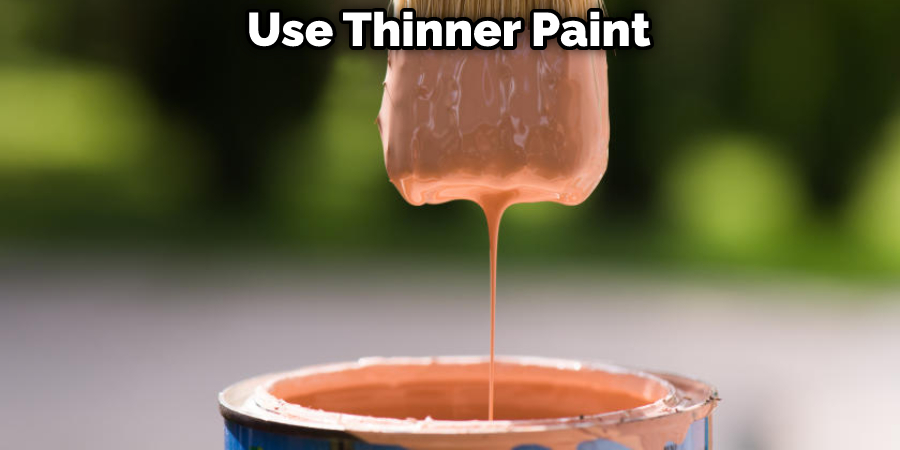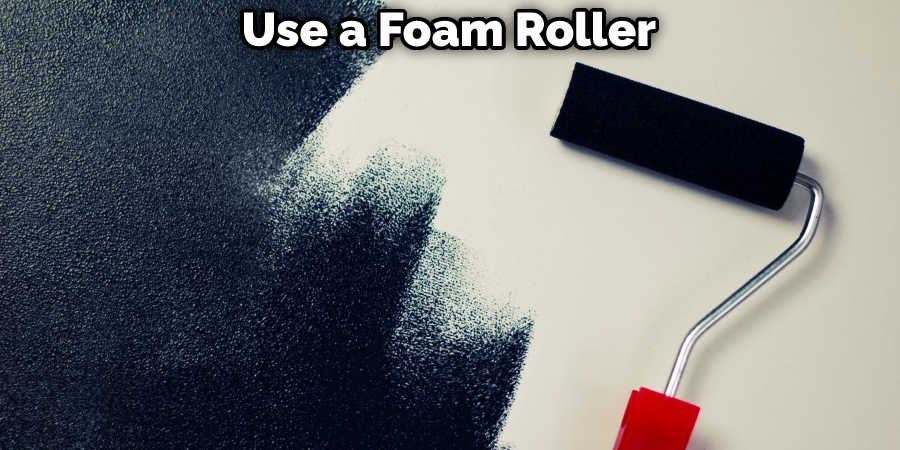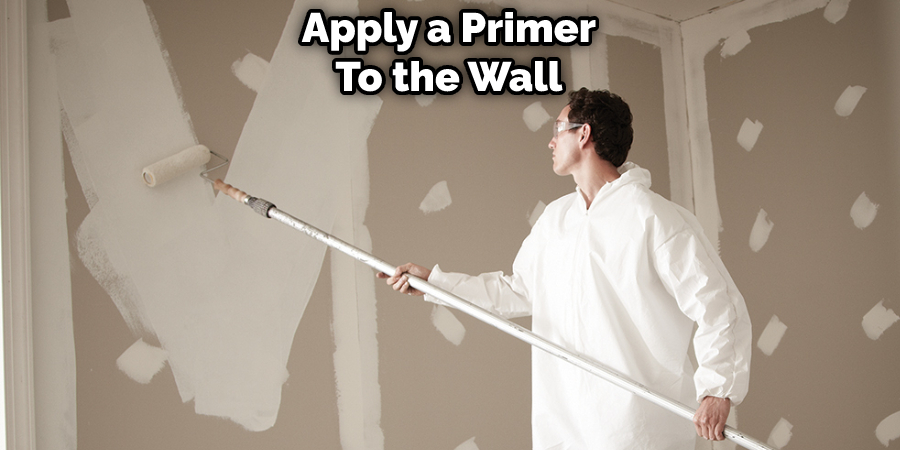Paint streaks on your walls can be a real eyesore. They can ruin an otherwise perfect paint job and make your walls look unsightly. But don’t worry, there are ways to fix this problem. This post will discuss how to fix paint streaks on walls. So read on for more information.

Summary: Painting walls can be tricky but there are several steps you can take to help fix paint streaks on your surfaces. Start by using a thinner paint or larger brush, or even a foam roller or paint pad. Then check the direction of the streaks and use a cleaning solution if necessary. Further, consider sandpaper, a heat gun or blow dryer, scraping off the paint, applying primer or simply trying a different paint. You should have perfect walls in no time!
What Causes Paint Streaks on Walls?
There are a few reasons why paint streaks may occur on your walls. The most common cause is when the paint is applied too thickly. This can happen if you use too much paint or if you apply it too thickly with a roller. Another common cause is when the paint dries too fast.
This can happen if the room is too warm or the paint is applied in direct sunlight. The other main cause of paint streaks is when the wall was not properly prepared before painting. This can happen if the wall is not cleaned or there is dust or dirt on the surface. Finally, paint streaks can also occur if the paint is not applied evenly. This can happen if you do not use a brush or roller to apply the paint evenly.
A Complete Guide on How to Fix Paint Streaks on Walls
1. Use a Thinner Paint:
The first way how to fix paint streaks on walls is to use thinner paint. This will help to prevent the paint from being applied too thickly. You can either use a thinner paint or add water to the paint to thin it out. First, add a little water to the paint and then apply it to the wall. If this does not work, then you can try using thinner paint.

2. Use a Larger Brush:
If you see paint streaks on your walls, one way to fix them is to use a bigger brush. This will help the paint go on more evenly. A bigger brush will also help keep the paint from being too thick. To use a bigger brush, dip it into the paint and then brush the paint onto the wall in long, even strokes. If you find that the paint is still being put on too thick, then you can try using a foam roller.
3. Use a Foam Roller:
A foam roller is a great way to apply the paint evenly. It will also help to prevent the paint from being applied too thickly. To use a foam roller, first pour some paint into a tray. Then, load the roller with paint and roll it over the wall’s surface. Make sure to apply pressure evenly to avoid creating streaks. If you do create streaks, use a brush to even them out.

4. Use a Paint Pad:
If you want to avoid using a brush or roller, then you can try using a paint pad. Paint pads are great for applying paint evenly and preventing streaks. To use a paint pad, load it with paint and then apply it to the wall. Make sure to move the pad in a back and forth motion to avoid streaks.
5. Check the Direction of the Streaks:
If you notice that the streaks are running in a particular direction, you can try fixing them by painting in the opposite direction. For example, if the streaks run horizontally, you can try painting vertically. This will help to clean the paint and prevent streaks. On the other hand, if the streaks are running vertically, then you can try painting horizontally.
6. Use a Cleaning Solution:
If the streaks are caused by dirt or dust, then you can try cleaning them with a mild cleaning solution. First, mix a small amount of dish soap with water. Then, use a soft cloth to wipe down the affected area. This will help to remove any dirt or dust that is causing the streaks. If the streaks are still visible, then you can try using a stronger cleaning solution.

7. Use Sandpaper:
If an uneven surface causes the streaks, then you can try sanding them down. First, use fine-grit sandpaper to sand the affected area. This will help to smooth out any bumps or unevenness. If the streaks are still visible, then you can try using coarser-grit sandpaper. Again, it is important to sand lightly, as sanding too aggressively can damage the paint.
8. Use a Heat Gun:
If the streaks are caused by dried paint, then you can try using a heat gun. First, hold the heat gun about 6 inches away from the wall. Then, move it back and forth over the affected area. This will help to loosen the dried paint and make it easier to remove. If the streaks are still visible, then you can try using a putty knife to scrape them off. If the streaks are stubborn, then you can try using a heat gun on a lower setting.
9. Use a Blow Dryer:
If the streaks are caused by too thick paint, use a hair dryer to heat up the paint and make it easier to spread. Move the dryer back and forth over the area until the paint starts to soften, then use a brush or roller to even out the streaks. If the paint is still too thick, add a little water to thin it out.
10. Scrape Off the Paint:
If the streaks are caused by dried paint, then you can try scraping them off with a putty knife. First, hold the putty knife at a 45-degree angle to the wall and gently scrape off the paint. Then, use a soft cloth to wipe away any residue. If the paint is difficult to remove, you can try using a heat gun to soften it up. Just be careful not to overheat the wall, damaging the paint.
11. Apply Primer:
If an old paint job causes streaks, apply a primer to the wall before painting. This will help to cover up any existing streaks and create a smooth surface for the new paint. To apply the primer, use a paintbrush to cut around the room’s edges. Then, use a roller to apply the primer evenly across the rest of the wall. Finally, allow the primer to dry completely before painting.

12. Try a Different Paint:
If you’ve tried all the above tips and the streaks are still visible, you may need to try a different type of paint. Some paints are more likely to cause streaks than others. If you’re having trouble with streaks, try using paint with a higher opacity. This will help to cover up any existing streaks and prevent new ones from forming. You can also try using paint with a higher sheen. This will help to reflect light and make the streaks less visible.
Tips and Warnings on How to Fix Paint Streaks on Walls
Tips
- Be sure to have the correct supplies on hand before starting. You will need a putty knife, fine-grit sandpaper, a paintbrush, and a clean cloth.
- Use the putty knife to scrape off any excess paint from the streaks.
- Lightly sand the area with fine-grit sandpaper.
- Apply a new layer of paint over the streaks using a paintbrush.
- Wipe down the area with a clean cloth to remove any dust or debris.
Warnings:
- Be careful not to sand too hard, as this can damage the wall.
- Make sure to remove all paint before applying a new layer. Otherwise, the new paint will not adhere properly, and the streaks will still be visible.
- Do not use a power washer to remove paint from the wall, which can also damage the surface.
- If the streaks are still visible after following these tips, you may need to repaint the entire wall.
Frequently Asked Questions
Why is My Paint Patchy After 3 Coats?
If you’re wondering why your paint is patchy after three coats, there are a few possible reasons. Maybe the surface wasn’t properly prepared before painting, or maybe the paint wasn’t mixed well. It’s also possible that the paint was applied too thickly or wasn’t given enough time to dry between coats.
Will Touch Up Paint Blend in?
It depends on the type of paint and the method used to apply it. For example, if you’re using a brush or roller, it’s unlikely that the touch-up paint will blend in perfectly. However, the paint will likely blend in better if you’re using a spray can. Just be sure to apply the paint in light, even coats. If you apply too much, blending in won’t be easy.
Frequently Asked Questions
Why is My Painted Wall Streaky?
There can be many reasons why your painted wall is streaky, and the most common ones include dry paint, water damage, peeling or flaking paint, improper preparation of the surface before painting, and bad jointer installation.
To avoid these issues in the future, start by prepping your walls properly with a good primer. Follow up with a high-quality painters’ paints that are specifically designed for use on primed surfaces. And make sure to install your jointer correctly so that there is no Flying Dutchman syndrome (where wood rides over one another), which will cause uneven Painting and lead to streaking.
Will the Second Coat of Paint Cover Roller Marks?
Roller marks are caused by the friction between the roller and the surface being painted. The paint won’t be able to stick to the roller because of the raised bumps on the surface. This is why it’s important to wait until the roller marks are gone before painting – the second coat of paint will cover them.
Why is My Paint Drying Different Colors?
Air pollution contains particles that can react with different ingredients in paints, leading to color variations. In some cases, this may be due to the presence of nickel or chromium ions.
Other factors that might affect the color of your paint include moisture levels, temperature fluctuations, and additives used in coatings. So if you’re noticing strange coloring changes in your painted surfaces, it’s best to contact a professional for an assessment.
Do You Get Paint Streaks to Go Away?
There are a few ways to remove paint streaks from your walls. One is to use a cloth or paper towel dipped in hot water and slowly rubbed into the streak. Be sure to avoid any contact with the painted surface; otherwise, you may end up damaging it further. Another option is using an abrasive cleaner that contains sandpaper particles or scouring agents. Finally, you can try painting over the streak with a coat of new paint.
Conclusion
So, there you have it! Now that you know how to fix paint streaks on walls go forth and apply your newly acquired knowledge. Remember to be patient, take your time, and most importantly, have fun with it. After all, what’s the point of doing something if you don’t enjoy yourself? Write to us and let us know how it went, and we’d love to hear from you.
